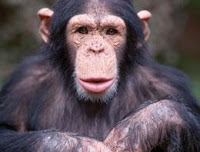 One of the most popular evidences proclaimed for evolution in recent years is the high similarity between the human and chimpanzee genomes. The cousin genomes are about 99% similar and this has repeatedly been expounded as an obvious proof text of evolution. But these comparisons did not include the finicky Y chromosome which only recently has been decoded from the chimp genome. These new results show an entirely different picture. Read more
One of the most popular evidences proclaimed for evolution in recent years is the high similarity between the human and chimpanzee genomes. The cousin genomes are about 99% similar and this has repeatedly been expounded as an obvious proof text of evolution. But these comparisons did not include the finicky Y chromosome which only recently has been decoded from the chimp genome. These new results show an entirely different picture. Read moreHuman-Chimp Genomic Differences
 One of the most popular evidences proclaimed for evolution in recent years is the high similarity between the human and chimpanzee genomes. The cousin genomes are about 99% similar and this has repeatedly been expounded as an obvious proof text of evolution. But these comparisons did not include the finicky Y chromosome which only recently has been decoded from the chimp genome. These new results show an entirely different picture. Read more
One of the most popular evidences proclaimed for evolution in recent years is the high similarity between the human and chimpanzee genomes. The cousin genomes are about 99% similar and this has repeatedly been expounded as an obvious proof text of evolution. But these comparisons did not include the finicky Y chromosome which only recently has been decoded from the chimp genome. These new results show an entirely different picture. Read more